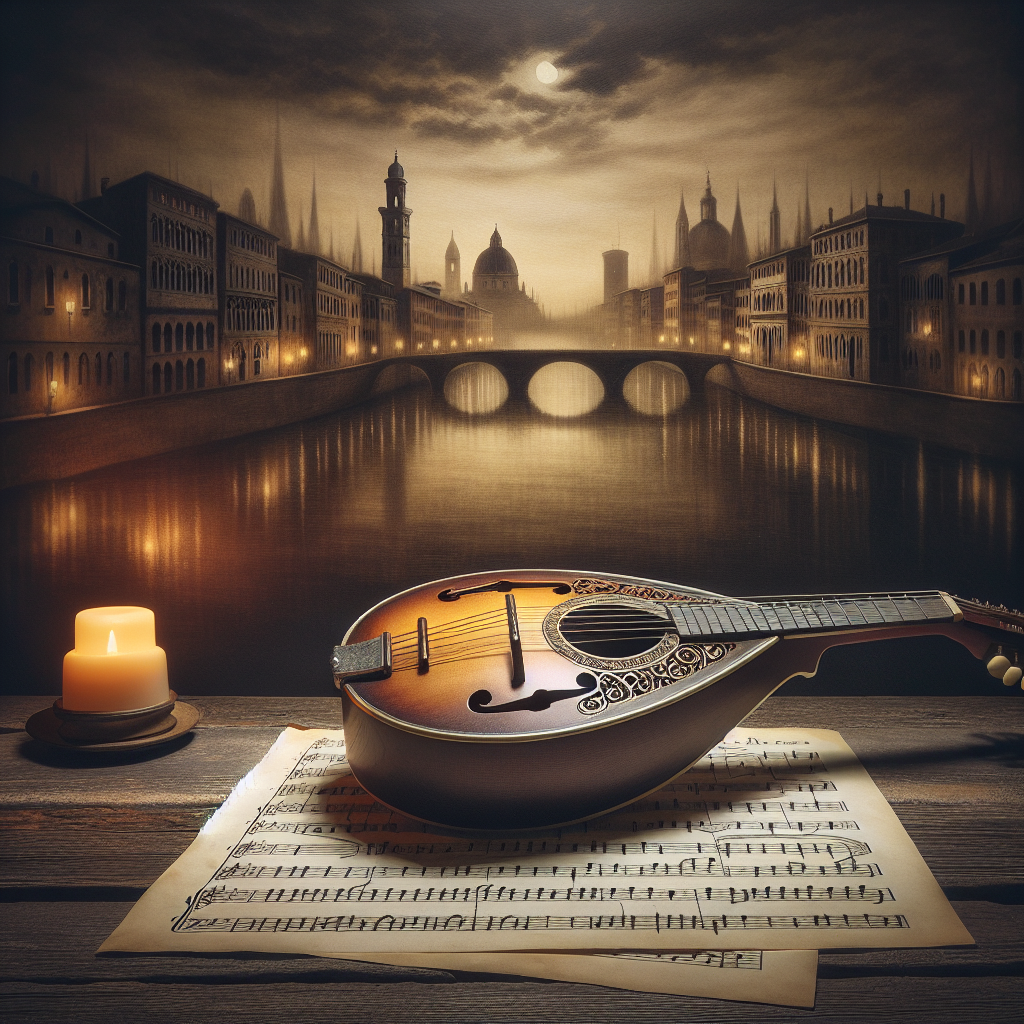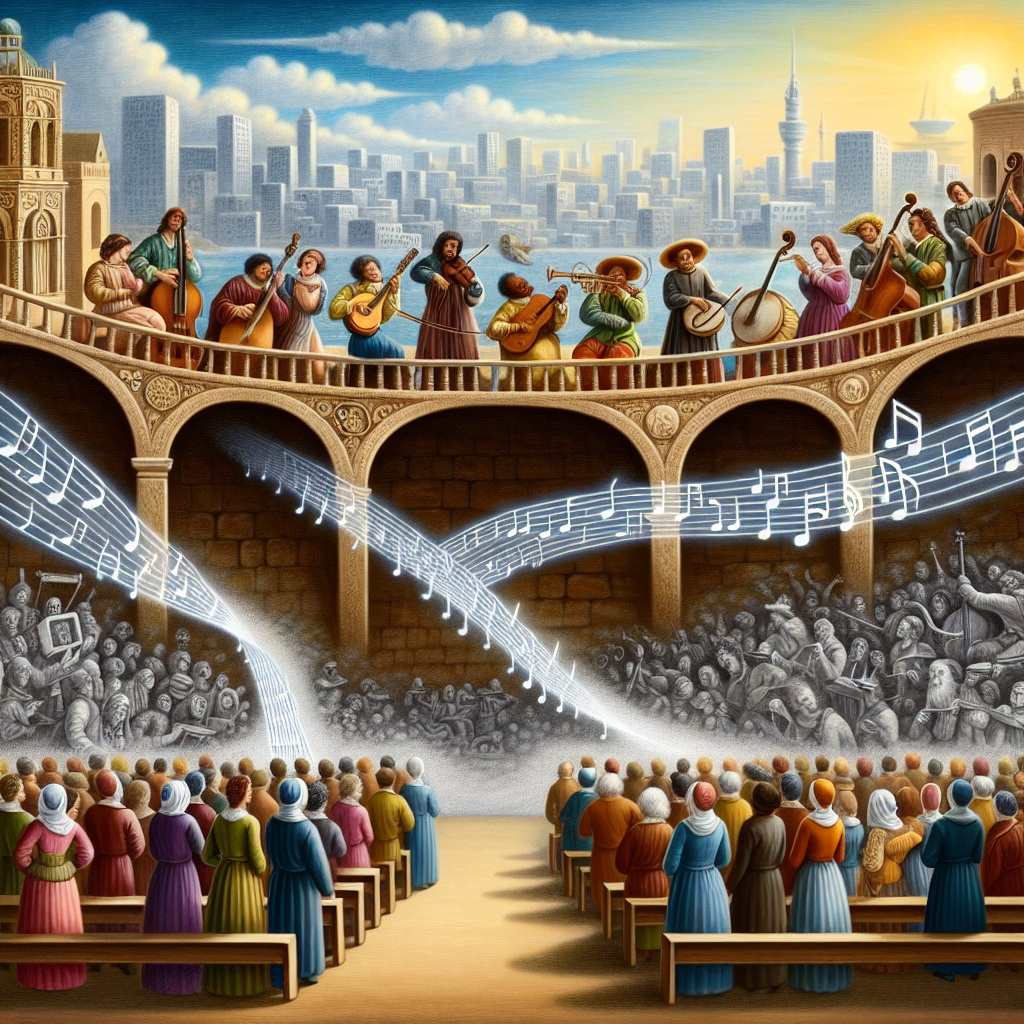“Harmonizing History: The Timeless Echoes of Renaissance Music”
Introduction
The Renaissance, a vibrant period of European history spanning from the 14th to the 17th century, heralded profound transformations in art, culture, and, notably, music. This era witnessed the emergence of significant changes in musical composition and performance, which have echoed through the ages and continue to influence modern music. The introduction of polyphony, a style characterized by the simultaneous combination of several independent melodic lines, and the development of more complex musical notation, allowed for richer, more textured compositions. Renaissance music, with its emphasis on harmony and the humanistic themes of the time, laid the foundational principles that continue to resonate in contemporary music genres, from classical orchestration to modern choral arrangements. This enduring legacy highlights not only the artistic innovations of the period but also the timeless nature of its musical expressions, which still captivate and inspire audiences today.
Influence of Renaissance Music on Modern Genres
Music of the Renaissance: How It Still Resonates Today
The Renaissance, a vibrant period of reawakening in art, science, and culture, spanned from the 14th to the 17th century and brought about a transformation in music that continues to echo through the ages. This era of music, characterized by its harmonic richness and textural complexity, laid the groundwork for the musical structures we enjoy in various modern genres today. As we explore the influence of Renaissance music, it becomes clear how deeply it has permeated contemporary music, inspiring artists and shaping sounds in ways that are both subtle and profound.
One of the most significant contributions of Renaissance music is the development of polyphony, which involves multiple independent melody lines being played simultaneously. This technique has evolved but is still fundamental in classical compositions and has found its way into the complex arrangements of modern jazz and progressive rock. The intricate interweaving of melodies that was mastered during the Renaissance can be heard in the improvisational exchanges of jazz musicians and the layered soundscapes of bands like Pink Floyd and Yes.
Moreover, the Renaissance period emphasized the emotional expression in music, setting the stage for the emotive dynamics that are central to genres such as blues, soul, and R&B. Composers like Josquin des Prez and Giovanni Palestrina explored the depths of human emotion through their compositions, a practice that has carried through to the heartfelt lyrics and melodies in the works of artists like Aretha Franklin and John Legend. The ability to convey profound feelings through music, which was cultivated during the Renaissance, remains a powerful element of these modern styles.
Additionally, the Renaissance introduced numerous musical forms and styles, including the madrigal, which is a secular vocal music composition. The madrigal was known for its expressive poetry and subtle nuances, a precursor to the lyrical sophistication found in contemporary music, particularly in genres like folk and indie where lyrics play a pivotal role. Artists such as Bob Dylan and Joni Mitchell owe a part of their lyrical complexity to the poeticism that was popularized during the Renaissance.
The period also saw the rise of instrumental music, setting the foundation for orchestral arrangements that feature prominently in film scores and symphonic metal bands today. The textural elements that were explored during this time—such as the contrast between loud and soft, or the use of varied instruments to create a fuller sound—are now staples in the cinematic scores composed by Hans Zimmer and John Williams, who use these techniques to evoke a wide range of emotions and bring stories to life.
Furthermore, the Renaissance practice of improvisation, particularly in instrumental music, can be directly linked to the freestyle improvisation in jazz and even the spontaneous nature of rock guitar solos. This freedom in musical expression, which was celebrated during the Renaissance, is a cherished aspect of modern performances, allowing musicians to connect with their audience in moments of unscripted creativity.
In conclusion, the music of the Renaissance has not only survived but thrived, weaving its influence into the fabric of modern musical genres. From jazz to rock, from classical to pop, the echoes of Renaissance music are evident, proving that the innovations of the past continue to inspire and shape the future of music. As we listen to today’s music, we are, in many ways, listening to the reverberations of history, reminding us that art is not just a reflection of the time in which it is created but a continuous dialogue between the past and the present.
Renaissance Instruments in Contemporary Music

Music of the Renaissance: How It Still Resonates Today
The Renaissance period, a vibrant epoch of artistic flourishing, brought forth a plethora of innovations that transcended visual arts to leave a lasting imprint on the world of music. This era, spanning from the 14th to the 17th century, was marked by the creation and popularization of several musical instruments that continue to echo through the ages, resonating deeply even in today’s contemporary music scenes.
One of the most enchanting legacies of Renaissance music is the lute, an instrument that captivates with its deeply resonant twang and intricate design. The lute, originally derived from the Arab oud, was the centerpiece of many Renaissance compositions and enjoyed widespread popularity among musicians and audiences alike. Today, the lute’s influence can be subtly discerned in the acoustic and classical guitar genres, where its delicate articulations and expressive dynamics are mirrored. Modern luthiers, inspired by historical craftsmanship, continue to build lutes, and some contemporary musicians have embraced the instrument, weaving its rich, textured sounds into modern compositions.
Similarly, the harpsichord, another stalwart of the Renaissance era, has made an indelible mark on modern music. Known for its crisp, distinctive timbre and the mechanical beauty of its action, the harpsichord was a precursor to the piano and featured prominently in both solo and ensemble settings during the Renaissance. In contemporary music, the harpsichord has seen a revival, particularly in genres like baroque pop, where its sonorous qualities add a layer of complexity and historical depth to the music. Bands and artists experimenting with classical fusion often incorporate the harpsichord to evoke an old-world atmosphere, bridging centuries through chords and melodies.
The viola da gamba, with its rich, sonorous tone, is another Renaissance instrument that whispers its legacy into the ears of the modern world. Used extensively during the Renaissance and Baroque periods, this stringed instrument resembles a cello but is played with a bow and has frets like a guitar. The emotional depth it can evoke is profound, making it a favorite for contemporary musicians interested in producing music with a nuanced, layered sound. In film scores and ambient music, the viola da gamba contributes a texture that is both ancient and fresh, a testament to its timeless appeal.
Moreover, the Renaissance’s exploration of wind instruments like the recorder has also left a significant mark on contemporary music education and performance. Often one of the first instruments taught in schools, the recorder’s simple design and sweet tone make it an excellent introductory instrument for young musicians. Beyond its educational use, the recorder is employed by modern composers who seek to incorporate its light, airy timbre into orchestral and folk compositions, thus continuing the Renaissance tradition of innovation and sonic exploration.
As we reflect on these instruments and their journey through time, it becomes clear that the music of the Renaissance still plays a vital role in the contemporary music landscape. By blending historical elements with modern expressions, today’s musicians are not just preserving a rich musical heritage; they are also creating a vibrant dialogue between the past and the present. This ongoing conversation not only enriches our cultural fabric but also inspires us to appreciate the depth and breadth of human creativity across ages. The Renaissance, with its innovative spirit and profound artistic achievements, continues to inspire and influence, proving that true art transcends the boundaries of time.
Educational Impact of Renaissance Music in Modern Curriculum
Music of the Renaissance: How It Still Resonates Today
The Renaissance, a vibrant period of reawakening in art, science, and education, profoundly influenced various aspects of modern society, not least of which is the realm of music. The melodies and harmonies developed during this era, roughly spanning from the 14th to the 17th century, continue to echo through time, influencing contemporary music education and performance. The educational impact of Renaissance music is particularly significant, as it offers a rich field for exploration and learning, bridging historical knowledge with modern musical techniques.
At the heart of Renaissance music was a shift towards more expressive and harmonious sounds, a departure from the more rigid and church-centered compositions of the medieval period. This era saw the rise of polyphony, where multiple independent melody lines were sung or played simultaneously, a technique that has profoundly shaped Western music. Today, students studying music are often introduced to these concepts early on, learning how to appreciate and analyze the complex interweaving of melodies that characterize much of Renaissance music. This foundational knowledge not only enriches students’ understanding of music history but also enhances their practical skills in composition and performance.
Moreover, the Renaissance period was marked by the invention and popularization of musical notation that we are familiar with today. This system of notation allowed music to be shared across Europe, leading to a more interconnected cultural exchange and the standardization of musical practices. In modern classrooms, learning this notation system is fundamental, and by studying its origins, students gain a deeper appreciation for the historical developments that have shaped musical communication. This historical perspective encourages a broader understanding of how cultural exchanges influence artistic expression, a lesson that is invaluable in our increasingly globalized world.
Additionally, the Renaissance introduced a variety of instruments that are still in use. Instruments like the violin were developed during this time, and understanding their history provides students with a more comprehensive knowledge of instrument technique and music theory. This historical insight adds depth to a student’s practical learning, allowing them to connect with centuries-old traditions as they master their craft.
Furthermore, the themes explored in Renaissance music, from romantic expressions to philosophical reflections, are universal and enduring. These themes offer a window into the human condition, a study that remains relevant today. By engaging with these historical pieces, students can explore timeless questions and ideas, fostering a deeper connection with the past and a better understanding of cultural and philosophical continuities and changes.
Finally, integrating Renaissance music into modern curricula encourages interdisciplinary learning. Music of this era often intersects with broader historical and cultural studies, providing a fuller picture of the time. For instance, understanding the role of patronage in the arts during the Renaissance can lead to discussions about the economics of art in the present day. This holistic approach not only enriches students’ education in music but also enhances their overall educational experience, promoting a well-rounded understanding of the world.
In conclusion, the music of the Renaissance, with its rich harmonies, innovative techniques, and profound themes, continues to resonate in today’s educational landscapes. It not only enriches the curriculum but also provides students with essential skills and knowledge, connecting them with the past while equipping them for the future. As we continue to explore and learn from this pivotal era, its music remains a vital tool in the educational tapestry, inspiring and informing generations to come.




